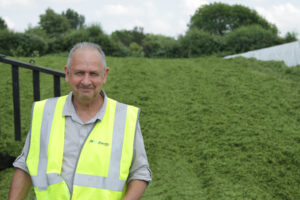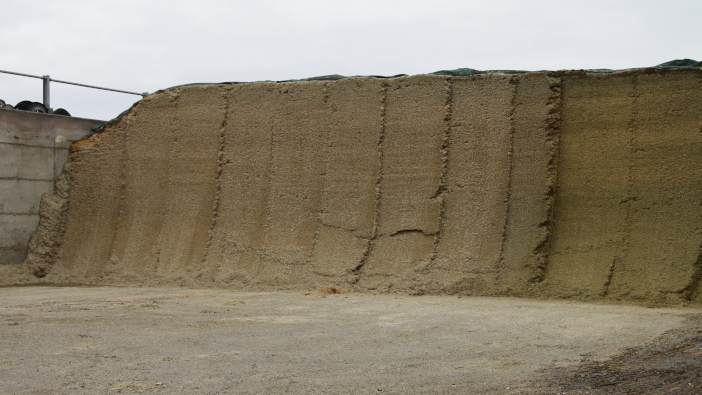Evesham-based Vale Green Energy has used a new silage additive from FM BioEnergy and is reporting that the product has further proved its value.
The company used Silasil Energy SG in trials during 2023/24, and then used it last season. It is specifically designed to suit the variability of UK grass and is said to work in a range of dry matters, temperatures and pH levels.
It’s a combination of four bacterial strains, instead of the two found in many other additives. According to forage manager Andy Lee, this has proven ideal for the unpredictable UK weather.
“In the UK and Ireland, we’ve had two years with highly unpredictable weather for making silage. In some areas it was wet early, in others it was too hot during mid-summer, drying crops out.
“In Northern Ireland particularly, they have had two atrocious years. This means that farmers have faced really challenging conditions. However, Silasil Energy SG has proved its effectiveness in two of the worst years possible for silage production.”
Use in wet silage
One user at Willsborough AD near Derry/Londonderry in Northern Ireland, explained that the average rainfall of 3.6in means that it can be hard to reach the recommended dry matter.
“I’m really pleased with the results we’ve had from using Silasil Energy SG this season,” says Willsborough AD owner Rob Gallagher. “In the past we’ve had issues with clamps heating and spoiling. However, with Silasil Energy SG, from the front of the clamp to the very end, the feedstock remains cold and free from yeasts and moulds all the way through the season.
“This hasn’t always been the case with some of the other silage additives we’ve tried over the years.”

Andy adds: “The amount of rainfall in Northern Ireland and the north of England can make it very hard to produce dry silage. Ideally, silage should be wilted for a maximum of 36 hours otherwise the aerobic bacteria start to consume all the nutrients, but wet weather can delay this.
“The other issue is that multiple turning of windrows to dry wet grass increases the chance of contamination with soil, manure, etc, increasing the risks of butyric acid formation. It is, therefore, more important to harvest it within 36 hours of cutting, irrespective of how dry it is, and the beauty of Silasil Energy SG is that it will preserve the crop even at low dry matters.”
Analysis in April of this year, after 22 weeks of storage, showed that the 2024 fourth cut silage was still in good condition, with good gas yield potential.
Use in dry silage
The West Midlands saw much drier conditions last year, with one dairy farm with its own 1.4MW biogas plant seeing first cut silage exceed 40% dry matter.
“Their first cut grass silage had almost 41% dry matter with high protein and digestibility,” explains Andy. “When we tested samples from the clamp in March 2025, there were no yeasts or moulds, and the crop was very stable. In fact, the analysis was one of the best results for grass silage I’ve ever seen.
“The farmer particularly likes the fact that he doesn’t have to worry about what the summer weather is going to be like – he knows the product will work equally well, whether it’s a washout or a scorcher. Plus, keeping the biogas silage clamps free from yeasts and moulds helps to reduce the risk of contaminating the dairy cattle feed elsewhere on the farm.”
Real-life use replicates trial results
The company states that these real-world examples reinforce the results seen in trials at Vale Green Energy. The Silasil Energy SG was tested on 12,000t of grass silage taken across three cuts in 2023 and feedstock manager Nick Reynolds was impressed.
“Not only is it easy to apply, but it works on both wet and dry grass, keeping the clamp face cool and ensuring the energy stays in the silage,” he commented.
Comparing treated and untreated samples, the trials showed lactic and acetic acid levels doubled after the additive was used, with average acetic levels reaching 0.454. Seven months later, the acid levels were equally high and pH levels were stable at 4.


